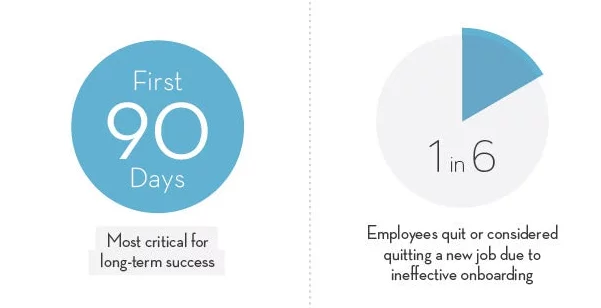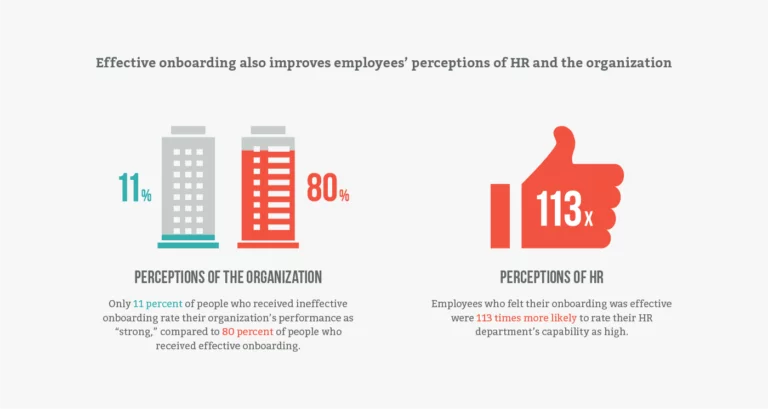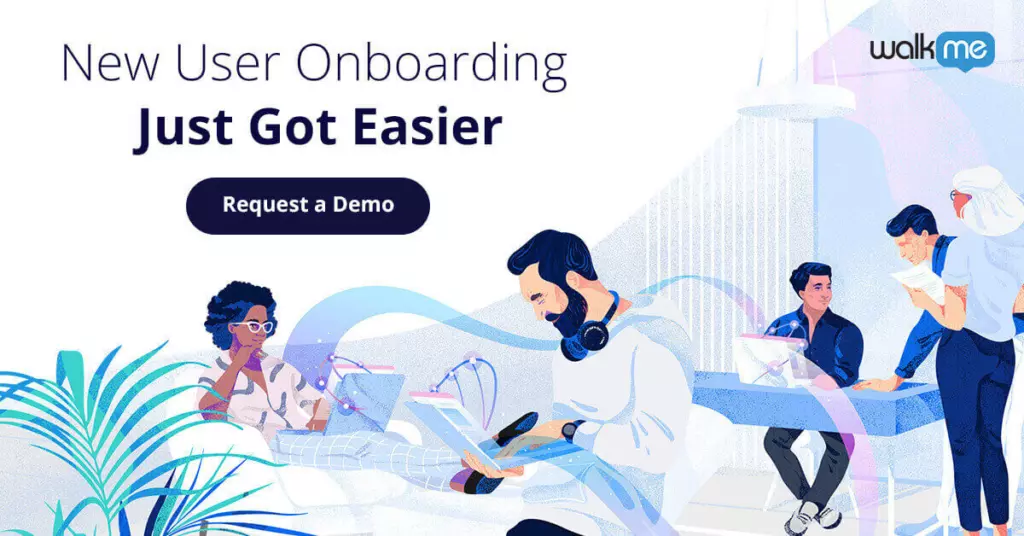An employee onboarding checklist can lighten the workload for hiring managers, streamline the onboarding process, and ensure that no key steps are forgotten.
Each new hire and each department has a unique set of needs, though, so it is important to avoid using the same cookie-cutter template in every situation.
Instead, the best option is to follow a main checklist, then tweak it as needed for each new hire.
Below, we’ll look at the most important items to include in onboarding checklists, then cover a few best practices to follow when applying them.
Key items to include in an employee onboarding checklist
Generally speaking, every new hire follows the same fundamental steps, regardless of their level or specialty.
Let’s look at a few of the most important.
Before the new hire arrives
Here are a few items to take care of before the new hire arrives:
Collecting key information. Managers must naturally have all of the most pertinent information about new hires in order to properly onboard them, such as their name, their job title, their immediate supervisor, their start date, and their contact details.
Preparing workstations and accounts. Ideally, newly employed staff should arrive to a completely functional workstation that includes everything they need to be productive, such as a computer, accessories, a telephone, and working software accounts. If they are working remotely, they will need to be equipped with the proper home-office set up.

Schedule key events with managers and coworkers. The onboarding process will include social introductions, meetings, check-ins, and other events that will stretch out over several months. It is a good idea to schedule these well in advance, in order to minimize the risk of scheduling conflicts.
Preparing all of these in advance of the employee’s arrival helps new workers feel more welcome and produces a positive impression of the company. This preparation also ensures that the first day goes more smoothly and that the new workers become more productive in less time.
First day
Orientation, it should be noted, is not the same as onboarding – it is just one step in the process.
To help new hires integrate more quickly into their new role, there are several key steps that should be focused on:
Orientation and paperwork. Orientation helps new workers get the lay of the land, and should include activities such as office tours, an overview of the company and its mission, explanations of company policies, and descriptions of safety procedures. Necessary paperwork should also be processed on the first day, such as benefits packages and employment agreements.
Introducing the job. Training will begin from day one, but it is important to start off by outlining information about the job, performance expectations, and other key details the employee will need to perform their job. Since it will take time for the employee to fully acclimate, it is a good idea to assign team members to act as coaches for the first few weeks.

Social integration. A welcoming and comfortable work environment can significantly affect a new hire’s first impression of the company. That impression, in turn, can affect engagement, productivity, and even how long they stay with the organization. Introducing coworkers, inviting employees to attend social events, and proactive communication can all help new hires feel more relaxed and comfortable.
Digital onboarding. Digital onboarding should not be overlooked. Employees in the modern enterprise, after all, spend the vast majority of their time working with digital tools, so it is important to have a separate process specifically dedicated to software onboarding, training, and development.
Many managers recognize that it takes weeks or months before an employee becomes fully acclimated and productive, yet they lack a longer-term onboarding strategy.
It is important to have a structured onboarding process that extends for three or six months, if not longer.
After the first day
The medium- and long-term checklist should include items that emphasize:
Employee support. Employees should have easy access to all the resources and tools they need and they should feel comfortable asking for assistance or advice. That access, when paired with supportive coworkers and managers, will go a long way towards improving engagement and performance.
Training and development. According to a survey sponsored by Allied Van Lines, almost 30% of companies felt that new hires took a year or more to become fully productive – and around 25% said that their onboarding program didn’t include training. These statistics should demonstrate the critical need for a well-structured employee training program.

Check-ins. Ongoing follow-ups with the employee can provide a number of opportunities to assess performance, address concerns, offer solutions if needed, and gain insight into the onboarding program itself.
The list covered here covers some of the most important items, but it is important to reiterate that every company and every hiring process is unique. To make the most of a checklist such as this, it is important to apply it correctly and customize it as needed.
Considerations and best practices
Here are a points to keep in mind when designing and using a template:
Remote onboarding requires a different approach. In 2020, companies around the world were forced to implement telecommuting policies and remote onboarding as a result of the COVID-19 pandemic. In a remote work environment, it is important to take extra steps to ensure that employees receive the training and support they need. Digital adoption platforms and daily virtual water cooler chats are just two examples of techniques that can help improve the virtual onboarding experience.
Choose the right onboarding software. Digital adoption platforms, just mentioned, are an excellent solution for onboarding employees remotely. They offer on-demand guidance and software walkthroughs directly inside a target software platform, regardless of where employees are located. Having platforms such as these can significantly improve productivity, engagement, and skill levels.
Take a data-driven approach to onboarding. Data-driven business processes perform well because they are directly tied to performance metrics and goals. When hiring managers track, for instance, metrics such as time-to-productivity and turnover, they can gauge the impact that their onboarding efforts have on the organization itself.
Plan for a future that is more remote and more digital. In the coming years, we can expect to see a greater need for digitally savvy workers. Perpetual learning, in fact, is expected to become the norm in tomorrow’s workplace. Since the demand for digital skills will increase, onboarding and training efforts should become more structured and more focused on digital training.
Adhering to best practices such as these can significantly improve onboarding efforts and set up new hires for long-term success within a company. Great onboarding programs can also go a long way towards creating a more comfortable and enjoyable work atmosphere.


